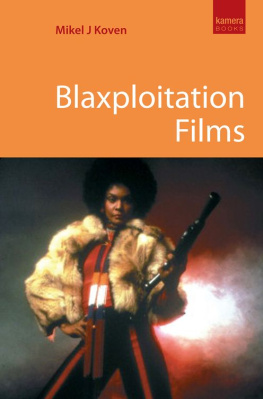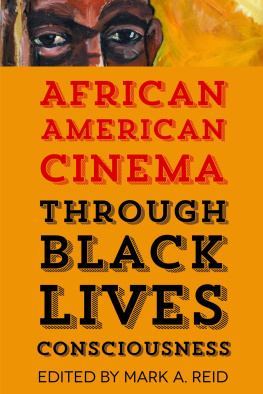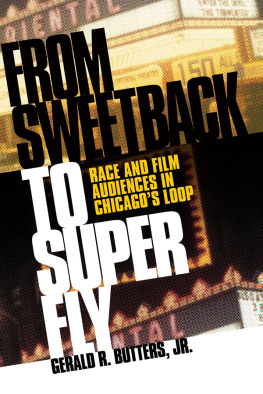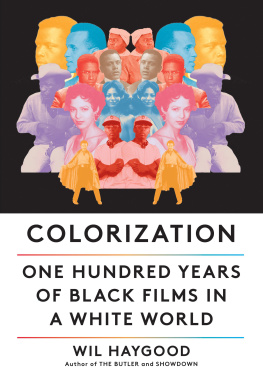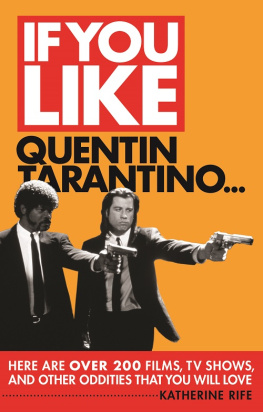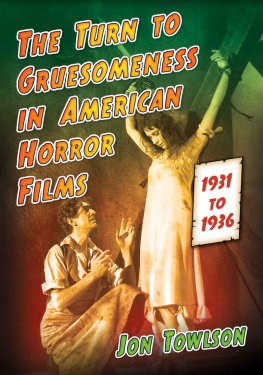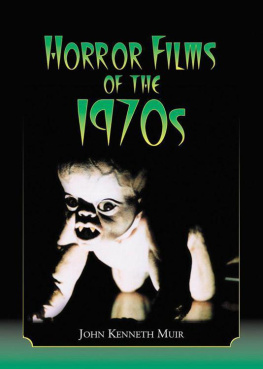For My Dad
This book is dedicated to the memory of these African-American pioneers who have died since the publication of Blaxploitation Films (2001). They will be missed.
James Brown (composer) (19332006)
Roscoe Lee Browne (actor) (19252007)
Don Chastain (actor) (19352002)
Ossie Davis (actor/director) (19172005)
Ivan Dixon (actor/director) (19312008)
Tamara Dobson (actor) (19472006)
Robert DoQui (actor) (19342008)
Teresa Graves (actor) (19482002)
Julius Harris (actor) (19232004)
Isaac Hayes (composer, actor) (19422008)
James Hinton (cinematographer) (19162006)
Willie Hutch (composer/musician) (19442005)
William Marshall (actor) (19242003)
Rudy Rae Moore (actor) (19272008)
Ron ONeal (actor) (19372004)
Gordon Parks (director) (19122006)
Brock Peters (actor) (19272005)
Billy Preston (composer/musician) (19462006)
Richard Pryor (actor) (19402005)
Cirio Santiago (director) (19362008)
Mel Stewart (actor) (19292002)
Paul Winfield (actor) (19392004)
CONTENTS
When I wrote the first edition of this Blaxploitation book for what was then the Pocket Essentials series (2001), I thought I knew what the term meant. You know, I said, like Shaft and shit. Not only was writing the 2001 edition a tremendous learning curve, but in the seven or so years since its publication, I have had to rethink a number of my assumptions about these films, particularly in light of some of my other work on exploitation cinema specifically La Dolce Morte:Vernacular Cinema and the Italian Giallo Film (2006). My understanding of exploitation cinema as vernacular, my perception of these films and what they were trying to do back in the 1970s has substantially altered. Since I began thinking of these kinds of movies as vernacular, I have felt the need to revisit a number of the films in this book and rethink much of my understanding of Blaxploitation in general. And yet, this book still needs to stand on its own as an introduction and attempt at cataloguing the phenomenon of Blaxploitation films.
The first thing to note, rather obviously perhaps, is that this genre, this period of filmmaking if you prefer, is a fusion of two different words black and exploitation. Blaxploitation films are, by definition, black exploitation films. But the problem comes when we ask who is being exploited? We know that most forms of exploitation cinema for example, splatter movies or pornography exploit images of violence and/or sexuality; the raison dtre of the films is the presentation of sex or violence, not their discourse or analysis. Any semblance to plot or story is purely accidental. These filmmakers exploit our desire to watch violence and/or sex, and if producers could get away with it they would give us nothing more than scenes of what weve paid to see. Extending this to include Blaxploitation films, these must be films that exploit our desire to see black people, specifically African-Americans, on screen, doing presumably what one expects or wants to see African-Americans doing.
And yet, as Blaxploitation star Fred Williamson notes in the documentary Baadasssss Cinema, discussed below, the fusion of black and exploitation was a political manoeuvre designed to discredit these vernacular films in favour of greater political autonomy for the middle-classes. The actor notes: NAACP and CORE theyre the ones who created this terminology: black exploitation. That has to be clear, on the record. It came from them. It didnt come from the white press. Who was being exploited? All the black actors were getting paid. They had a job. They were going to work. The audience wasnt being exploited. They were getting to see things on their screen theyd longed for.
Suddenly, this definition becomes even more problematic. Blaxploitation films fulfilled African-American filmgoers desire to see black actors and actresses on screen in leading roles. However, what we see those African-Americans doing on screen in those leading roles gives a warped view of black culture in the early 1970s. The roles for black characters within Blaxploitation films, although more diverse than what had previously been seen (as explained in Donald Bogles seminal work on the representation of blacks in American cinema, Toms, Coons, Mulattoes, Mammies and Bucks [2001]), did not necessarily reflect the lives of African-Americans in the United States at that time. The films contain the dreams and aspirations of American blacks and also sell images back to them. This means that I am drawing a faint line between Blaxploitation films made by black filmmakers and ones made by white filmmakers. This is not to say that black filmmakers never pandered to white stereotypes, nor that white filmmakers are necessarily insensitive to black representation but, as I examine the films in this book, certain differences occur frequently enough that a preliminary pattern emerges.
As for the term exploitation, in this case it refers to the actual marketing of a film, i.e. using the publicity to have a specific impact (see, for example, Eric Schafers Bold! Daring! Shocking! True! [1999]). In theory, Baz Luhrmanns Romeo and Juliet (1996) was presented as an exploitation film through its poster art, music-video advertisements and images of its teen stars in publicity photos doing daring, adventurous and romantic things. The marketing for Luhrmanns film played down Shakespeare and played up (exploited) the teen dimension of the story to get that audience to see the film. Likewise, Franco Zeffirelli marketed his Hamlet (1990) as an action-adventure film by highlighting the revenge theme and Mel Gibson. John McTiernan parodies this exploitation of Shakespeare in his Last Action Hero (1993) by having the films young hero fantasise about Arnold Schwarzenegger in Hamlet with an announcer saying: Theres something rotten in the state of Denmark. And Hamlets takin out the trash! Comparing Blaxploitation films to films about Shakespeare may be an extreme comparison to make, but the point is that anything can have exploitative marketing.
Turning to the Blaxploitation films themselves, one can see how these films were marketed by looking at the advertising from three Pam Grier films: Coffy, Foxy Brown and Friday Foster. All three are produced by American International Pictures (AIP), the low-budget masters of exploitation cinema. The design of all three posters is more or less the same: they feature a large image of Grier, slightly off-centre, and at her feet is a collage of artists renderings of various scenes in the picture, some romantic and the others action-oriented. The large images of Grier have her dressed sexily: for Coffy, she is wearing skintight leggings and a halter top, accentuating her breasts; for Foxy Brown, she is in a long yellow dress, but crossing her legs, giving a thigh-high flash of her leg; and likewise for Friday Foster, Grier is standing, wearing a dress slit to her waist and revealing as much leg as is possible. In both the posters for Coffy and FridayFoster, Grier is holding a gun, while for Foxy Brown she is reaching for a small Derringer-like pistol concealed at her ankle. So what do all these images mean? The mixture of romantic and action scenes indicates that the movies are full of sex and violence. The large picture of Grier suggests not only that the lead character is a beautiful woman whose sexy body youll be seeing a lot of, but that shes armed and dangerous too. The camera around Griers neck on the Friday Foster poster looks like an afterthought, as if someone in AIPs art department finally read the script and realised that the character Grier plays is a photographer. These posters exploit the desires of the movie-going public so that they will pop their money down at the box-office window to see these films.

